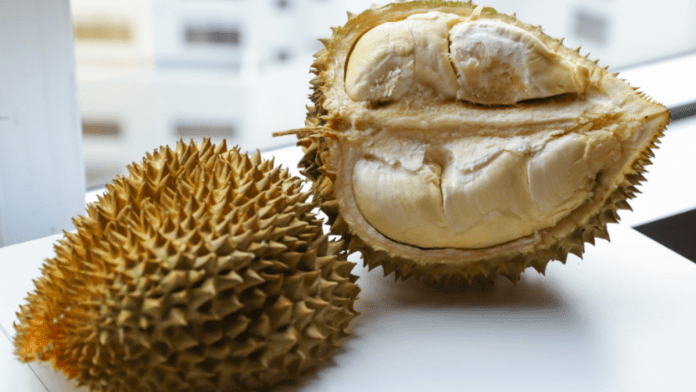News in brief: China is taking various measures to enhance its agricultural self-reliance and food security due to climate change-induced extreme weather events. These measures include growing domestic durians, expanding trials of genetically modified (GM) corn and soybeans, and increasing the production of white-feathered chicken.
China is accelerating its campaign for agricultural self-reliance and food security in response to climate change-induced extreme weather events.
The country has invested in a number of measures to raise its level of food production, here are some as summarised by a South China Morning Post article.
It harvested its first commercial crop of durians in late July from its southern tropical island of Hainan. While, the yield was relatively small its significance great because durians are a popular fruit in China but are mainly produced in Southeast Asian countries, like Thailand, Malaysia, and Indonesia.
As its largest consumer, importing 825,000 tonnes of the fruit in 2022, the successful harvest is a step towards reducine reliance on imports. Although, the rare domestic durians were priced at around 120 yuan (US$16) per kilogram, which is about three times the cost of most imported durians. hectares.
Also, China has expanded its trial of genetically modified (GM) corn and soybeans to 20 counties in five provinces. It has begun producing GM seeds in northwestern Gansu province.
Quoting a Farmers’ Daily report, the article says that the Ministry of Agriculture has been sensitising the public that GM foods are safe. It cited examples of their successful adoption in other countries and argued that the technology is essential for ensuring stable food production, as it can increase corn and soybean yields by 5.6 to 11.6 per cent.
Additionally, China started exporting its home-grown white-feathered chicken to Tanzania in June 2023. The breed is fast-growing and meaty, and accounts for nearly 50% of China’s poultry production.
Last year, the country reduced its reliance on the United States for breeder white-feathered chickens because of an avian flu outbreak in North America and a decrease in international flights. The US is a major import destination for China’s breeder white-feathered chickens.
China’s soybean self-sufficiency rate increased by 3 percentage points in 2022 and reached 18.5%. As the world’s largest soybean importer, China decreased its intake to 91.1 million metric tonnes in 2022, a drop of 5.6% year-on-year, according to China’s Ministry of Commerce. Imports from the United States and Brazil, China’s two major sources of the crop, fell by 10% and 6%, respectively.
The agriculture ministry has vowed to grow domestic soybeans at an annual rate of 7% over the next decade. It also aims to achieve a 30.7% self-sufficiency rate by 2032 as its grains output continues to hold strong.



